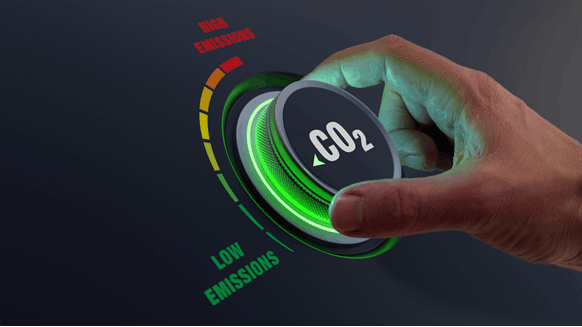The European Union has reported 2.8% less carbon dioxide (CO2) emissions from energy production using fossil fuels by 2022 at an estimated 2.4 gigatons, with the contribution of natural gas down “significantly” reflecting lower demand.
The continent’s largest economy, Germany, had the highest share at a quarter, Eurostat reported on Friday. Italy and Poland followed with 12.4% each. The fourth was France, with 10.7%.
Bulgaria recorded the largest increase at a rate of 12 percent, followed by Portugal at 9.9 percent and Malta at 4.1 percent.
The biggest drop was in the Netherlands, at 12.8 percent. Luxembourg posted the second biggest drop at 12 percent, followed by Belgium at 9.7 percent and Hungary at 8.6 percent.
“By 2022, aggregated data shows that CO2 emissions from solid fossil fuels (coal and oil shale, excluding peat) increased slightly at EU level (+3 percentage points; pp), while emissions from oil and oil products remained roughly at the same level as in 2021 (+1 pp. ),” the EU statistics agency said in a press release.
That of natural gas fell 13 percentage points, “which reflects, among other things, the efforts invested by EU countries to reach the goal of voluntary reduction in gas demand introduced in August 2022”.
EU members agreed to voluntarily take their own measures to reduce their natural gas demand by 15 percent each between August 2022 and March 2023 relative to each nation’s five-year average consumption previous ones The European Council’s decision meant “saving for this winter, to prepare for possible disruptions in gas supplies from Russia, which continuously uses energy supplies as a weapon,” he said in August decision-making body of the group of 27 members. 5, 2022.
On March 28, the council agreed to extend the reduction for one year until March 2024.
“CO2 Emissions from energy use are one of the main contributors to global warming and account for around 75% of all man-made greenhouse gas emissions in the EU,” he said. said the media release on Friday.
Eurostat did not include Sweden in its calculations pending revisions of the last two years’ oil data for that country. It also excluded emissions from importing electricity, as they are accounted for in the country of origin.
But he said that “the use of imported natural gas for electricity generation leads to increased emissions in the country that imported the gas.”
The methodology took into account emissions from coal, natural gas, oil, oil products and peat.
“A deeper analysis must take into account all imports and exports of different primary and derived energy products, basic products with integrated emissions (such as iron and steel), as well as, in the case of transport, tourism of fuel (ie, fueling a vehicle in one country but consuming that fuel in another country),” the agency said.
Pandemic rebound
In 2021, the EU recorded an estimated 6.3% increase in CO22 emissions derived from the combustion of fossil fuels compared to the previous year.
Eurostat noted in the 2021 report that “most of the containment measures for COVID-19 were lifted by EU member states”.
“In 2021, the increase in CO2 emissions was mainly due to the increase in the use of solid fossil fuels (which contributed to more than 50% of the increase). Liquid fossil fuels were responsible for more than 29% of the increase, while 21% can be attributed to natural gas. The reduced use of peat slightly alleviated the increase in CO2 emissions,” he said on June 24, 2022.
In 2020, the first year of worldwide pandemic confinement, CO2 Fossil fuel emissions fell in the EU by around 10 percent, according to Eurostat.
“In 2020, a clear decline in fossil fuel consumption (hard coal, lignite, shale oil and tar sands, petroleum and petroleum products, and natural gas) was observed in all countries,” most of which also register a weaker consumption of oil and oil products. the agency reported on May 7, 2021.
Lower consumption in 2022
The Center for Research on Energy and Clean Air (CREA) previously reported that while the EU increased fossil fuel imports from other countries last year as it banned supplies from Russia, deliveries did not Russians “did not cover the increase in demand to the extent that they did. for the loss of supply from Russia”.
And while energy demand rebounded before Russia’s war against Ukraine following the easing of pandemic restrictions, the conflict-induced price spike hit consumption, the non-governmental organization said.
“The rebound in the use of coal and other fossil fuels that was associated with the reopening and economic recovery after the end of COVID-19, and the use of coal or CO2 emissions never exceeded pre-pandemic levels,” CREA wrote on February 13.
“The fossil fuel supply shock has also accelerated clean energy investments and the energy transition, leading to faster coal phase-outs and emissions reductions in the coming years than previously expected.”
To contact the author, please email jov.onsat@rigzone.com


